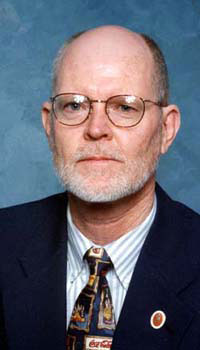
[an error occurred while processing this directive]

Today@Sam | Headlines | Calendar | Experts | Notices | Archives | Search
SHSU Researcher Measures
Teacher Moonlighting, Satisfaction

|
The biannual "Texas Teachers, Moonlighting, and Morale" report by David and Travis Henderson has been conducted every two years since 1980.
"This year's report is especially disturbing in light of recent information that over 40,000 classrooms in Texas are staffed by inappropriately certified teachers," said Ignacio Salinas Jr., president of the Texas State Teachers Association, which sponsored the study. "That figure doesn't take into account the number of classrooms staffed by long-term substitutes."
The study was conducted by David Henderson, professor of curriculum and instruction in the SHSU College of Education and Applied Science, and Travis Henderson, coordinator of planning and evaluation for the Texas Department of Corrections' Windham School District.
In spite of the efforts of the legislature and local school districts to enhance salary and benefits to address the teacher shortage, 26 percent of Texas teachers are moonlighting in order to make ends meet. Two years ago 28 percent of Texas teachers reported having to work a second job.
On average, teachers are earning an additional $3250 a year from moonlighting. Seventy-two percent believe moonlighting has a detrimental effect on their teaching.
According to the report, the average Texas teacher is a 40-year-old female with a bachelor's degree; she makes $36,367 and is married with a working spouse. Ninety-two percent have a computer at home, and 61 percent don't feel that they have adequate time to prepare for class. Forty-three percent are the family breadwinner. These teachers average 13.2 hours of work per week at home.
On other issues:
- Only 1 in 10 believe that a single standardized test should be used
for student promotion;
- Today's teacher has half the years of experience that her counterpart had in
1996--a drop from 16.7 years to 8.5 years.
- The number of teachers with a master's degree has dropped to 26 percent from a high of 49 percent in 1984.
"Given the stress, the hours, the lack of support, and the inadequate salary, it is no surprise that the teacher shortage is getting worse and that experienced teachers are getting out of the profession," said Salinas. "At a time when we are increasing the standards for all of our students and making our tests and graduation requirements tougher, we must have a qualified, certified teacher in every classroom."
All indications are that the teacher shortage will worsen over the next decade, according to Salinas. The student population in Texas continues to increase, as does the percentage of current teachers eligible for retirement. Competition with other states and the private sector is already becoming more intense.
"The Texas State Teachers Association will be working with the legislature and local school districts to find a solution soon," he said. "The well being of the next generation of Texas children depends on it."
David Henderson began conducting research on teacher moonlighting and morale in 1980. This year's report represents the 12th biennial survey.
- END -
SHSU Media Contact: Frank Krystyniak
May 2, 2002
Please send comments, corrections, news tips to Today@Sam.edu
This page maintained by SHSU's Office of Public Relations
Director: Frank Krystyniak
Communications Coordinator: Julia May
Located in the SHSU University Advancement Building
Telephone: 936.294.1836; Fax: 936.294.1834
